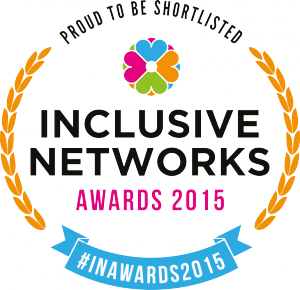BiVisibility: perspectives from a bisexual academic
 Although Bisexuality is bang in the middle of the LGBTQ acronym, it is often overlooked, marginalised, or completely invisible – hence the need for #BiVisibility and #BiVisibilityDay. We hear words and phrases like “just a phase”; “greedy”; even “deviant”. Women who identify as bi, according Dr Julia Shaw, who knows of what she speaks, has said she has been accused of “doing it for the attention of men”. We’re regarded less favourably by heterosexuals than homosexuals, and by homosexuals than heterosexuals. I have faced fairly loaded and scathing questions from individuals who identify as homosexual as to why I refer to myself as “bisexual” than “pansexual”. I explained, it doesn’t mean I’m not gender blind, or not supportive of trans individuals. I also reminded them that any given sexual identity is not “better” or “worse” than another.
Although Bisexuality is bang in the middle of the LGBTQ acronym, it is often overlooked, marginalised, or completely invisible – hence the need for #BiVisibility and #BiVisibilityDay. We hear words and phrases like “just a phase”; “greedy”; even “deviant”. Women who identify as bi, according Dr Julia Shaw, who knows of what she speaks, has said she has been accused of “doing it for the attention of men”. We’re regarded less favourably by heterosexuals than homosexuals, and by homosexuals than heterosexuals. I have faced fairly loaded and scathing questions from individuals who identify as homosexual as to why I refer to myself as “bisexual” than “pansexual”. I explained, it doesn’t mean I’m not gender blind, or not supportive of trans individuals. I also reminded them that any given sexual identity is not “better” or “worse” than another.
It can be a tough gig.
I can’t put it better than Anything That Moves (Beyond the Myths of Bisexuality), in an excerpt from the Bisexual Manifesto (1990):
Bisexuality is a whole, fluid identity. Do not assume that bisexuality is binary or duogamous in nature: that we have “two” sides or that we must be involved simultaneously with both genders to be fulfilled human beings. In fact, don’t assume that there are only two genders. Do not mistake our fluidity for confusion, irresponsibility, or an inability to commit. Do not equate promiscuity, infidelity, or unsafe sexual behavior with bisexuality. Those are human traits that cross all sexual orientations. Nothing should be assumed about anyone’s sexuality, including your own.
In fact, though I’ve been comfortable – to most – identifying as bisexual for about a decade, I’ve learnt a lot about bisexuality, and the challenges bi individuals can face, over the last year. Some of these facts may surprise you.
- 52% of the LGBT+ community identify as bisexual.
- We’ve been described as the ‘Invisible majority’ by the LGBT Movement Advancement Project.
- 58% of us have been exposed to bi-phobic jokes at work.
- We’re more prone to anxiety and mood disorders.
- 40% of bi high school students (US) have seriously contemplated suicide, and almost a third have attempted it.
- Intimate Partner Violence (IPV) is a much more common experience for bi women – and bi men, as is sexual assault.
Between a quarter and a third of millennials don’t identify as completely straight or gay. We (and I am a millennial) are here, and it’s important that we’re seen and understood.
There is some fantastic research being done in the academic community – across disciplines – regarding bisexuality. Mark Wilkinson, at Lancaster, is one example. He looked at every usage of the word ‘bisexual’ in The Times between 1957 (the year of the Wolfenden report, suggesting homosexuality be decriminalised) and 2017. Did you know British oysters, some plants, and even tubeworms used to be described as ‘bisexual’? I didn’t. Even the Judeo-Christian God has been called “bisexual”. Since the 19th century, the word has been used to describe those with characteristics of both sexes – as Helen Zaltzman, interviewing Wilkinson in her excellent podcast, The Allusionist, observes, it was a synonym for hermaphroditic, unisex, or even ambidextrous. In 1962, Wolfenden, then Vice-Chancellor of Reading University, referred to “bisexual things” such as fencing, canoeing and dancing – meaning involving both sexes. Even instruments, including the flute and the drum, have been described as “bisexual”.
The word has, for a lot of its history, been applied to many, many things – though only fairly latterly and more frequently as a distinct sexual identify. One of the earlier examples (from Wilkinson’s research) is a reference to Lord Byron, who was described (In 1957) as having a “bisexual nature“ (or “spirit”) because he had sexual and romantic relationships with men and women. In fact, it had been used this way since 1892, just not very widely. It only really took off from 1979 – to find out more, you can listen to the podcast, or read Wilkinson’s study.
I’m running out of words on this post, so I’ll conclude with a more personal point. Perhaps because they know I’m bisexual (I am out at work), or perhaps because they’re fed up with heteronormativity in psychological research, a lot of my students who do their dissertations with me actively focus on bisexuality (and other sexual identifies). I specialise in personality research, evolutionary psychology, and mating behaviors – and these fields would benefit from a greater awareness and inclusion of bisexuality, as would society at large. After all, as I say, future generations are increasingly using it to describe their own sexuality – rather than referring to oysters. Progress has, and is being made, slowly but surely. Let’s keep it up.
Some resources that may be of interest:
YouGov Survey: 1 in 2 young people say they are not 100% heterosexual
The Allusionist: A Podcast about Language. By Helen Zaltzman
Anything that Moves. From Wikipedia, the free encyclopedia.
Celis, V. (2014, November 5). Differences Between Bisexuality and Pansexuality, HealthyPlace. Retrieved on 2019, September 25 from https://www.healthyplace.com/blogs/thelifelgbt/2014/11/differences-between-bisexuality-and-pansexuality
Shaw, J. (2019). Making Evil: The Science Behind Humanity’s Dark Side. Canongate Books.
Wilkinson, M. (2019). ‘Bisexual oysters’: A diachronic corpus-based critical discourse analysis of bisexual representation in The Times between 1957 and 2017. Discourse & Communication, 13(2), 249-267.








